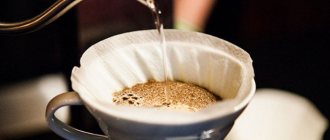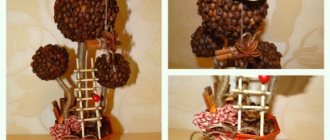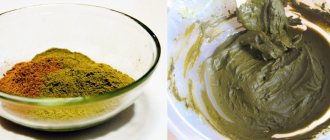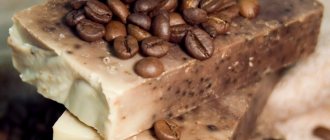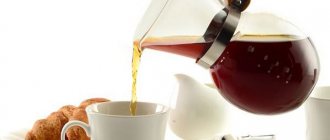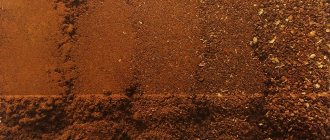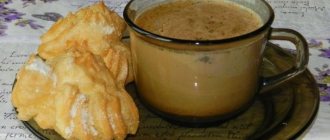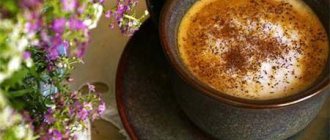What is a coffee tamper and why is it needed?
Every professional barista or true fan of quality espresso in their home kitchen has a tamper. This is not a whim or a tribute to fashion. Temper has important functional significance.
The name of the accessory comes from the English term “tamping”, translated as “tamping”.
The tamper presses the coffee in the portafilter, compacting the coffee powder into a coffee tablet. Tamping is needed to slow down the rate of water flow through it, as well as to increase the uniformity of wetting of the coffee. An even flow of water through the entire coffee mass ensures optimal extraction, and, consequently, high quality of the finished drink. If the water flows too quickly or unevenly, the coffee will be weak, watery, and overly sour.
The professionalism of a barista means the consistent taste of every cup of espresso brewed. Good temping compacts each coffee tablet, allowing water to flow evenly at a low speed.
Tempering is so important to a barista that there are special workshops and classes that focus only on tamping techniques. There are also special educational materials: books, lectures, and video courses. And they all directly point out: the quality of the tamper determines the temperament. That is why this small accessory is a must-have tool for a good barista or a fan of real espresso.
Famous artists who worked in tempera technique
Among the most famous artists of the Renaissance, who created great masterpieces of world culture using the tempera technique, there are many big names. But the author of this article wants to pay tribute to other painters who have revived the popularity of ancient techniques in our time. Among them:
- Joseph Southall (Joseph Edward Southall) is the world's leading temperament painter of the late 19th and early 20th centuries. The English artist devoted most of his life to the revival of ancient technology, experimented a lot and achieved not only critical recognition, but also resounding commercial success with the public.
- Remedios Varo is a famous Spanish surrealist, the author of many paintings with a deep philosophical meaning. Master of creating magical images of mythical creatures.
- Andrew Wyet is a prominent representative of regionalism in American painting. Winner of numerous state awards for services to art.
- Pietro Annigoni is an ardent follower of classical traditions in painting and an implacable opponent of avant-garde art. A unique master of romantic portraits of the second half of the twentieth century.
On the Very Important Lot portal, connoisseurs of beauty can always take part in art auctions and purchase masterpieces of world antiques. And also - buy paintings directly from contemporary artists, painted in different techniques.
Coffee tampers: shape, type, material of manufacture
For a long time, temperas were made from simple and cheap plastic, until the American Rage Barber, dissatisfied with the inconvenience of working with plastic models and the quality of the tamper, decided to take matters into his own hands. He began to produce heavy temperas with comfortable, ergonomic handles. Now his company is an industry leader, and branded tampers from Barber often become prizes at professional competitions.
The niche was quickly mastered by other manufacturers of coffee accessories, continuing and developing the idea of a convenient and weighty tamper. Today they are produced from different materials, with platforms of various sizes and shapes.
Tempera platform shape
It can be flat or convex, round. Baristas and experts still can't agree on which form is best.
- The flat platform allows you to create a uniform coffee tablet.
- Convex tampers compact the middle of the coffee, leaving the sides of the tablet slightly higher.
Each option has its fans. Entire monographs have been written about the advantages of one form or another of the platform. Setting aside the emotions surrounding this topic, flat platforms are suitable for double portafilters, while convex tampers give good results for single portafilters.
Flat tampers can have a smooth platform or a convex pattern in the form of concentric circles that leave marks on the ground coffee. Experts agree that there is no functional difference between a smooth or patterned platform; this does not affect the quality of temping.
Material of manufacture
- Plastic is the cheapest material; low-quality temperas are made from it.
- Aluminum is better than plastic, but is susceptible to corrosion in wet environments and is too light for a good seal.
- Steel is the best material for distemper soles, as it is heavy, durable, durable, and does not oxidize or rust.
- Wood - not platforms are made from it, but handles for the best dispensers.
Dimensions
There are two important dimensional parameters - the diameter and height of the distemper platform. For branded models of industrial production, the platform diameter is usually standard: 53, 57 or 58 mm, height – 7-10 mm. For hand-made tampers, these parameters are calculated during manufacture and depend on the size of the portafilter. The ideal diameter of the tamper should be 0.5-1 mm smaller than the diameter of the filter. If the holder is cone-shaped, then the diameter of the platform is calculated for the narrowest part.
Manufacturers and prices
Accessories are produced by many manufacturers of coffee equipment for baristas: Motta, Tiamo, Brewista. The cost of steel tampers with wooden handles ranges from 2100-2200 rubles. All-steel cast temperas are cheaper - from 1,500 rubles.
Unbranded accessories will cost from 1,100 rubles.
Branded temperas from Reg Barbera cost from 4.5-5 thousand rubles. But it is possible to assemble an accessory to order, choosing separately the handle and platform according to your taste and size.
Rules for good pacing
The rules for good temping, as one of the parts of the espresso preparation process, have been described more than once in various works. One of the best instructions was written by David Schomer of Espresso Vivace. His rules are simple and competent, and the first among them: the size of the tamper must exactly match the size of the filter basket.
“The process of placing ground coffee is a delicate matter. Before you start tamping, you need to level the ground coffee into an ideal mass without lumps or pits. Then you should carefully place the tamper on the surface of the coffee and press down, not forgetting to check that it is placed evenly. When first applying, it is important to achieve the ideal level of coffee smoothing before applying force. The most optimal pressure for good compaction is 12-15 kilograms.
(5 likes)
Gaggia
Previous post
Ukrainian Coffee Festival
Next entry
How to choose a tamper?
Models with a steel platform and a wooden handle are considered comfortable and functional. They are reliable and last a long time. You can buy a ready-made accessory or make it to order according to drawings.
In order to choose a good tamper, you need to know some of the features of the coffee maker you will be working with.
- Portafilter diameter. The tamper you purchase should be only slightly smaller in diameter than the narrowest part of the filter. If the tamper is too small, it will be difficult to tamp the coffee.
- Double or single filter in a coffee maker. For a double holder, experts advise buying a flat tamper; for a single holder, you can choose the shape of the platform to your liking. If you are just starting to work with coffee, it is better to take a flat tamper; it will allow you to quickly achieve uniform tamping. However, only the barista himself can give a definite answer on the preferred form of the tamper while working.
Tempera paint - what is it?
Modern coloring options, as before, are obtained by mixing different components; the name itself means “mixing paints.” The constituent component is a pigment in powder form, an element that connects the rest; now it can be natural or artificial additives, oil and water.
All these ingredients are mixed, the proportions can be different, as a result the finished version turns out thick, then water is added to obtain the required consistency. It can be used on different materials; artists create all kinds of works with it, thanks to its ease of use.
Artists create all kinds of works with it, thanks to its ease of use.
Features of tempera
Tempera paint works best when applied to absorbent materials, or on canvases that have been previously prepared by priming. When the paints dry, a matte texture similar to gouache is obtained, but there is also a slight change in shades.
This is not a suitable option for easel painting, however, some painters used only it, and successfully coped with the tasks.
So what is the best use for tempera paints? Most often used for glazing technology. It helps to draw small details. If you decide to implement the impasto technique, then you should take into account that the coating is characterized by rapid drying, this happens on the palette. Mixing on a canvas is a difficult task, but it can be done if you work with oil. Its peculiarity is that it has poorer ductility compared to oil; therefore, when an excessively thick layer is applied, cracking occurs.
It helps to draw small details.
Advantages and disadvantages
It will help to better understand what tempera paints are by considering their positive and negative sides. The advantages of tempera include the following:
- Primary paints required the artist to follow the rules of work, step-by-step application, modern types allow you to create without a strict systematic work, giving more opportunities for the implementation of ideas;
- If you cover the design with varnish on top, the effect will be better than with oil types;
- Over time, tempera does not lose its original appearance and lasts a very long time;
- The drying process does not take long, and there is no protracted period of volume reduction;
- No brush marks left;
- The varnish does not change the shade of the paint;
- Not washed away by water;
- Penetrating ability, penetrates into the wood structure.
It also has a couple of disadvantages:
- High drying speed;
- Change in shade after drying.
Over time, tempera does not lose its original appearance and lasts for a very long time.
Coffee tamper: our conclusion
- Needed for uniform compaction of dry coffee in a holder (portafilter).
- It can have a flat or convex platform; which is better is up to the barista to decide.
- The best tampers have a stainless steel platform and a wooden handle.
- The diameter of the tempera platform should be 0.5-1 mm smaller than the diameter of the coffee machine filter.
- They are produced by different manufacturers, but products from Reg Barbera are considered luxury.
- Cost – from 2000 rubles.
- Can be made to order.
How to use a tamper
Most espresso brewing manuals include tempering rules. Special courses for the barista profession help you learn in practice how to use a special device.
Be sure to read: Making coffee in a carob coffee maker: features of the process
The main condition is that the dimensions of the press must fit the holders. The barista should use a digital scale to take out as much ground coffee as the recipe calls for. Professionals determine the coffee mass by eye and add it without additional measuring on a scale.
To avoid slipping, make a bookmark on a special mat. Coffee is poured into the holder, then the mass is distributed in the filter. The barista should tap the sides with his palms, then press the press firmly against the surface.
If everything is done correctly, you will get a dense and even tablet. The barista should refrain from rotating the tamper and unnecessary movements. If you scroll the tamper, bevels are formed. They cause uneven extraction.
